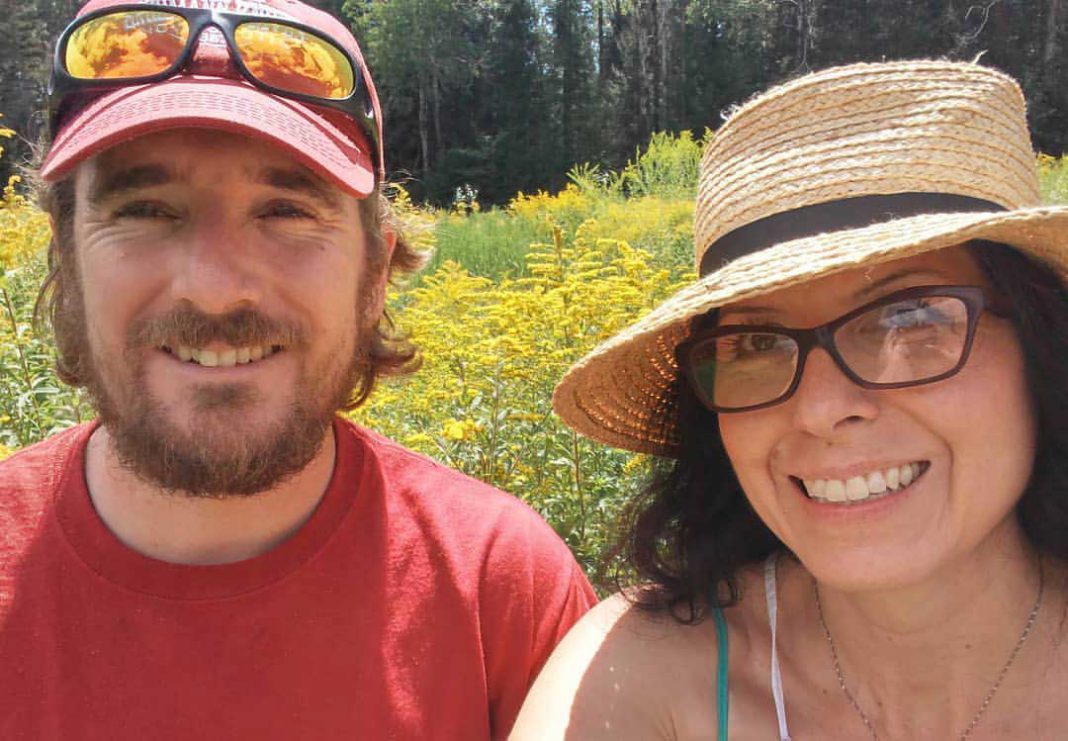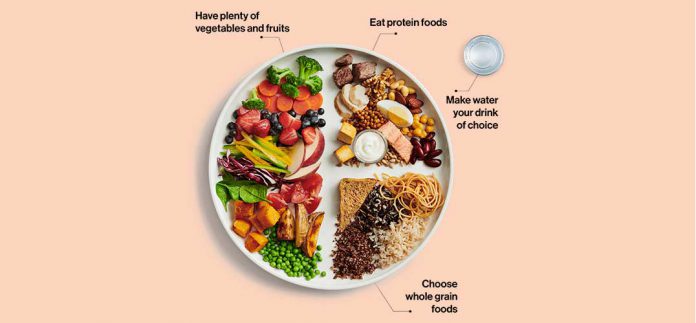Part I of a series
Couple surviving on food grown or harvested recount first month’s experiences
EDITOR’S NOTE: The Expositor will be checking in regularly with this couple who have ties to Manitoulin Island as they embark on their Big Wild Year challenge. This is the first update since they began.
NORTH BAY—A North Bay couple’s Big Wild Year is now one month underway and the two say they have not been looking back.
“We thought we might have to start lying about our dislikes because everything’s been really good! We both feel real healthy and have lots of energy,” says nurse Delphanie Colyer, who is originally from Wiikwemkoong and completing this challenge alongside her partner Jeremy St. Onge.
Chances are good that you may have heard about this couple’s story before. After The Expositor first reported on their plans in December of 2018, they have since appeared on CTV Northern Ontario News, CBC News, a North Bay radio station, CBC Radio-Canada en Français and in the North Bay Nugget. They have even drawn the attention of a New York-based research student.
“He found us online through our social media channels and he’s doing research on urban access to foraging opportunities,” says Mr. St. Onge, adding with a chuckle, “as two newly famous foragers, he’s interested to get our Ontario perspective.”
Throughout 2018, the two had been preparing for their new challenge. The rules are straightforward: For an entire year, they can only eat foods that they have either foraged for or hunted. They are still using modern technologies like freezers and dehydrators to preserve their foods to last for the year but have cut out some modern luxuries such as municipal tap water—they instead fill jugs with 80 litres of water at a spring-fed well every week.
“We’re both really mindful about [the consumption] aspect of it. I normally drive back from Jer’s place, stop at Tim’s and grab a coffee, but I can’t do that anymore,” says Ms. Colyer.
She has felt the loss of coffee particularly strongly when she works overnight shifts as a nurse.
“I already knew I’d have a crazy migraine coming off coffee and I did. It lasted for 12 days but since then it’s been pretty great,” says Ms. Colyer. “Now I don’t notice any difference at night or during the day. I take along a big thermos of tea we make.”
The transition to the new diet did not happen exactly as the two had expected.
“For our last meal of the year on New Year’s Eve, we tried to eat so many things—we had pies on the table and ordered the kids pizza. We got a great big ribeye steak into us and thought we’d have a couple different beers, wine and champagne. We had the wine and the steak but woke up in the morning with the pie untouched, as well as the ice cream and cheeses. We wasted our chance to eat them one last time!” says Ms. Colyer.
According to Mr. St. Onge, the two have each found themselves cooking more for their children, against what they might have expected. Their children are not part of the Big Wild Year because the couple agreed they would not subject them to experiments on fundamental needs such as nutrition without first knowing the risks and possible outcomes.
“I thought I would have a hard time cooking for the kids, but I actually enjoy being able to crack an egg and cut a tomato,” says Ms. Colyer. “I find it hard not to taste the food first because I want it to taste good for them. But they’re old enough that they’ll tell me. And I also have to get used to wiping my fingers off all the time instead of licking them.”
“I spend a lot more time thinking about what I pick up in the grocery store for the kids now, more than before,” says Mr. St. Onge.
He adds that cutting coffee from his diet has brought some interesting perspectives to his former daily life.
“I will probably save $70 in coffee this month alone. I went to the grocery store and bought $69 worth of food for a food drive and I realized my coffee for a month could probably feed a person for a month,” Mr. St. Onge says.
There have been some early signs of health benefits, too.
“We’ve each lost the weight that we wanted to lose and we’ve each experienced skin clearing. I’d say my skin clearing has been the most dramatic from where it was before,” says Mr. St. Onge.
Ms. Colyer adds that the two are experiencing much lower rates of gas, bloating and bowel irregularity that might come with a high-carb diet.
Being confined to a curtailed, closed choice of cooking components has cultivated culinary creativity in the couple’s cuisine creations.
“I definitely find Del’s cooking creativity very rewarding,” says Mr. St. Onge.
Ms. Colyer continues, “I enjoy thinking of how to put food together in exciting little ways. A lot of times it’s pretty easy just to throw meat in the slow cooker and make a stew, and I thought I’d be content with it. I’m not. It’s good but you don’t want it week in, week out.”
One of the innovations Ms. Colyer has created are fishcakes that are made from perch roe, acorn flower and seeds. They are a favourite of the couple, but they are in short supply.
“I wish we had lots of fish eggs because then we could make and freeze a bunch of patties. You could just throw them into the toaster and heat them at work for lunch or between meals. When I’m doing the night shifts, it would be nice to have a snack,” says Ms. Colyer.
“Everything is pretty much a meal, you can’t just grab a handful of something. Well, I did snack on some dehydrated wild grapes I picked and occasionally will crack a walnut and have a few pieces,” she says.
Mr. St. Onge has a different approach to his snacks.
“My snacks are between-meal meals,” he laughs.
“I couldn’t get from one end of my workplace to another without being 15 minutes late. Everyone who had seen us on the news wanted to know what I had to eat that day,” says Mr. St Onge, adding that people seem to have mixed reviews on playing witness to the challenge.
“I have colleagues who do not want me to microwave bear meat in the office, but then other colleagues who are interested to see what I’m doing.”
He says that, from an unscientific observation, it would appear that their foraged foods are fulfilling their nutritional needs.
“I thought I’d feel hungry, but it’s only been twice that I’ve been hungry where my stomach was growling and I couldn’t wait to get home and eat. We’re feeling satisfied with our food, so things are being covered and we’re not really having cravings. I think, nutritionally, that’s a good sign,” Mr. St. Onge says.
To evaluate how their bodies perform on the new diet, the couple had taken bloodwork before starting their diet. They expect to receive the first results from an in-trial blood test in the next few weeks. They will also be undergoing physical strength testing around May or June.
Determining how well their food supplies are holding up is a difficult task for Mr. St. Onge.
“The stock right now looks pretty good, but it might be going faster than we thought. I keep oscillating between ‘it’s good, what if it’s not good, yes we’re in good shape or no, it doesn’t look like there’s much there today.’ I find it hard to actually gauge how much food is there and convince myself how long it will actually last,” he says.
Refilling their food store is not a simple task. Ms. Colyer says preparing the food goes far beyond cooking regular meals from scratch.
“This has been a slow, slow food movement,” she says. “The prep involved just to get the scratch ingredients is a lot. Our acorn flour has hours put into it and that’s our starting ingredient for a lot of things. When I take meat out of the freezer, I think of the hours we spent chasing, catching, doing our own butchering and wrapping it.”
But with that significance comes a certain sense of nostalgia and fond memories of gathering their food together last year.
“You’re really aware of everything you’re putting into your mouth. It’s a real blessing to us and it’s something other people maybe would like to try to think about a bit more—where their food is coming from,” says Ms. Colyer.
The year is only just beginning but Ms. Colyer says—at this point—she would consider undertaking a similar challenge again, albeit with some changes to their restrictions.
“This year we’re trying to get a good garden going to have things for next year, and to let our kids get the experience of knowing where their food comes from and to see some of the work involved. We take them to the farmers’ market all the time and they really love all that farm fresh food. If they could know a little bit more about what goes into it, it would be nice for them,” Ms. Colyer says.
Some other changes to the restrictions might include allowing for kitchen staples such as salt and pepper, eggs and possibly butter, so long as they are farm-fresh.
“And I really want tomatoes,” she adds. A toasted tomato sandwich was one of the last foods Ms. Colyer ate before starting the Big Wild Year.
Also in the future, the couple says they would like to experiment with trading and gifting their traditional foods to other people, to give the broader community a sense of what effort goes into making food items that can be taken for granted.
To follow Ms. Colyer and Mr. St Onge’s Big Wild Year, you can view their updates at Facebook.com/BigWildYear. The Expositor will be checking back with the two throughout the year to share their experiences in this unique endeavour.




